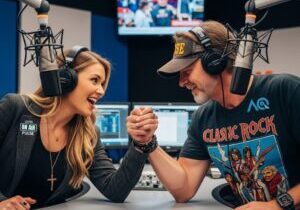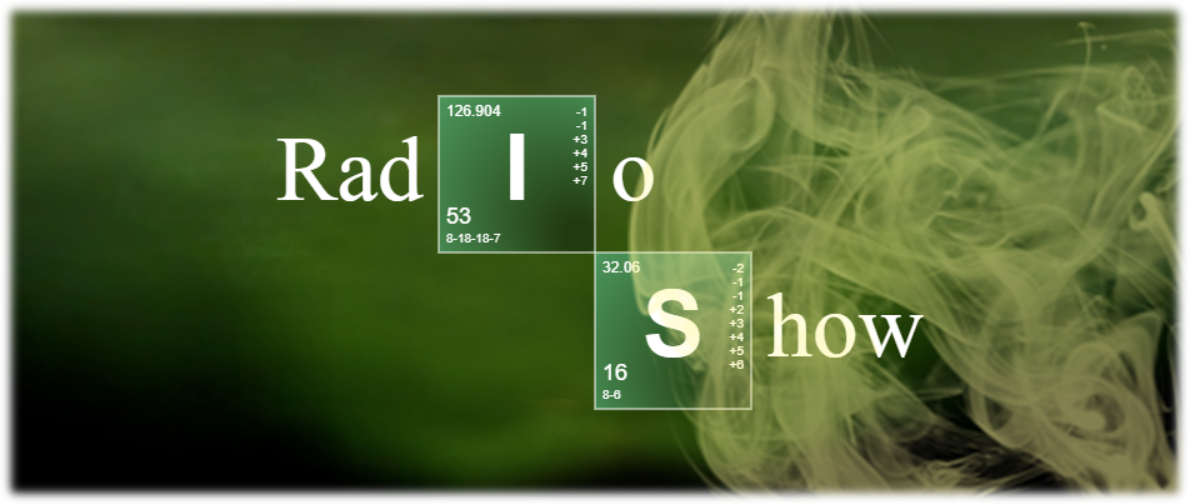
If you’re in radio and you’re responsible for a show or a format either on the air or behind the scenes, I have a full disclosure for you:
Today’s post is very likely going to piss you off. Or at the very least, annoy you. (I’m still annoyed and I’m the one telling the story!)
You’ll be able to file it under “People who take radio for granted” because it’s an another indication how our medium keeps losing ground to other audio platforms, in this case, podcasting.
Let me take you back to a conference I attended in San Francisco back in 2019, those good old pre-pandemic days. The theme was “Voice in the Car” and I was invited to participate on a panel whose theme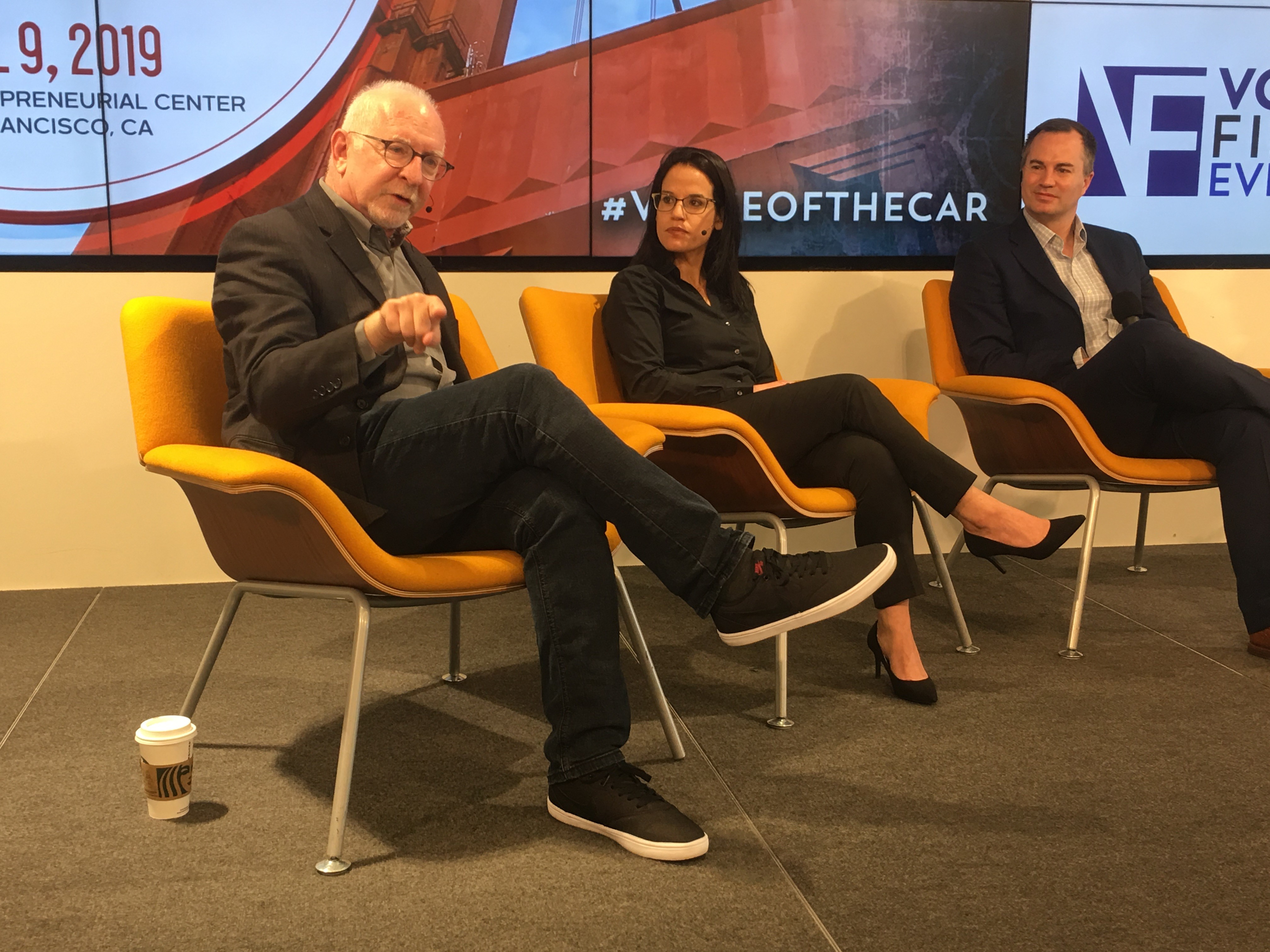 escapes me. Aside from being only one of three radio people in attendance, I found myself in that awkward position of having to defend what we do to a much younger group deep into streaming, and especially podcasting.
escapes me. Aside from being only one of three radio people in attendance, I found myself in that awkward position of having to defend what we do to a much younger group deep into streaming, and especially podcasting.
I brought up radio’s historic dominance in the dash, and most people weren’t especially surprised by that piece of data. But later, the panel started talking about the elements of what makes a good podcast, especially while in a car as a passenger or the driver. And a podcaster in the audience, while asking a question, talked about a revelation he had that more people are in their cars during the morning hours than any other time of day – that those early a.m. hours represented a target rich environment for podcasters.
At first, I thought he was joking. Isn’t that akin to “discovering” that breathing works better in an atmosphere with plentiful oxygen? But he went on to talk about how the marketing of his podcast had been shifted to take advantage of this fertile listening environment.
As nicely as possible, I pointed out that radio broadcasters had “discovered” this same phenomenon a few decades ago, and that was why most radio programmers scheduled their best shows for the morning commute. I also mentioned the interesting revelation that the commute home in mid-late afternoon represented a similar, albeit somewhat more fragmented opportunity to reap the benefits of a large, mostly bored available audience in cars.
Yup, it was frustrating to feel both ahead of the curve and behind it at the same time – an uncomfortable feeling of losing one’s media grip on a large group of consumers in search of something to listen to especially while driving.
And I had a bit of déjà vu when Chris Brunt shared an article with me which appeared in The New York Times late last month:
“What Makes Good Chemistry For Great Podcasts, It’s Fundamental”
The subtitle’s emphasis where writer Reggie Ugwu took this riveting topic wouldn’t have been worth a panel at this year’s Morning Show Boot Camp:
“The popular podcast genre makes the generation of compelling conversation look effortless. In reality, it’s anything but.”
Like so many other traits exuded by creative young podcasters, it makes it sound like they’ve discovered something very profound here. And in fact, that’s where the article goes – a discussion with successful podcasters about the nature of chemistry between hosts and insights into how to prepare for a show.
I know….I sound like a radio codger barking at these fledgling podcasters to “Get off my radio lawn!”
But the stark reality here is that the article, while trying to position podcasting as a unique media lifeform, provides virtually no insights to even those interning for their local news or sports talk radio station or two-person radio show.
In fact, some of their conclusions about what makes podcasts habit-forming and riveting are so fundamentally obvious, it makes you wonder why it’s taken two decades for these “best practices” to emerge.
Writer Ugwu notes “the popularity of chat podcasts has exploded in recent years.” Yes, he’s talking about pretty much every ensemble morning show you’ve ever heard. Pointing out that storytelling and gossip are key components to compelling audio, he points out that Covid ushered in a trend of “unscripted” podcasts due to “a stringent economic environment.”
Who’s going to tell him that he’s pretty much described every two person show that’s been on the air since the Carter administration?
We learn that it is this thing called “chemistry” between people behind the mic that “can propel an otherwise ordinary show to the top of the charts.”
And of course, that raises the question about the definition of “chemistry” and the reasons why producers struggle to manufacture it for every show.
We do learn that observing the audio waveforms of two people talking can be revelatory. If there are “spikes,” it’s an indication there are audible sparks between the hosts – something to keep an eye on.
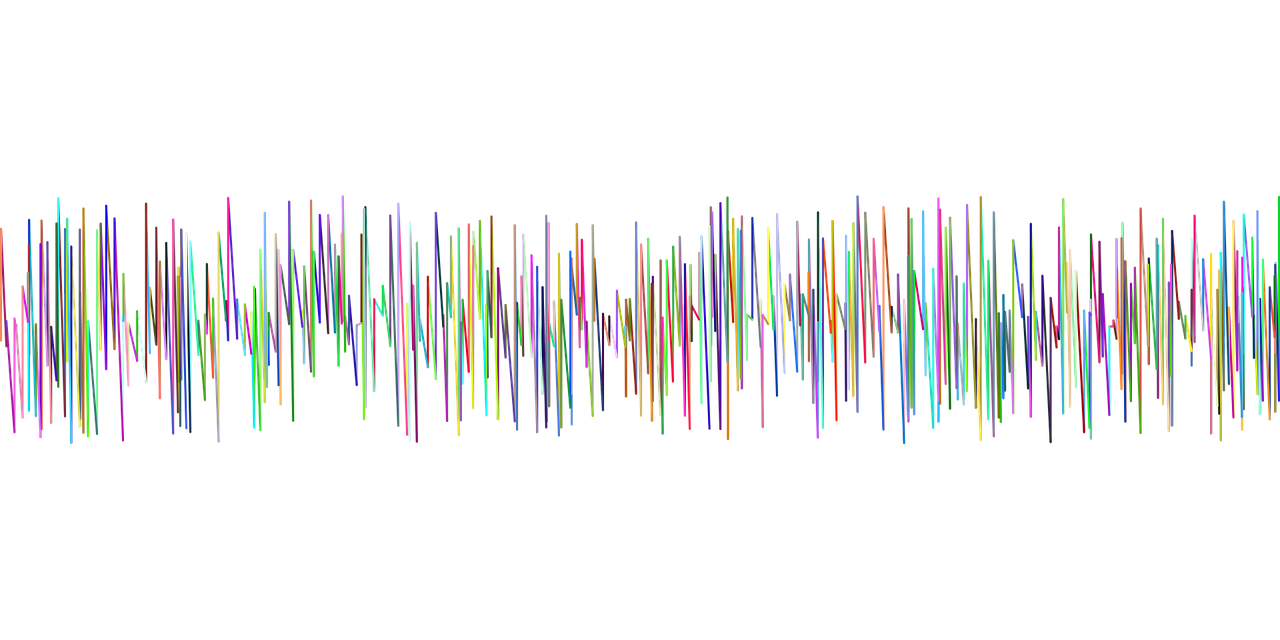
We learn that hosts who have “preexisting relationships” – friends, sibs, co-workers – have an advantage of knowing one another. But sometimes strangers can make great partners because their relationship is fresh.
Ugwu tells us that when there’s a group doing a podcast, the ensemble is more important than any one person. And that when hosts fight for mic time in a crowded studio, it can make for a not-so-entertaining podcast.
Wow.
via Spotify
Then there’s prep. And as you can imagine, there are different schools of thought. On the Handsome podcast, for example, the hosts prefer less prep so the conversation sounds more spontaneous and authentic.
But on Pivot featuring the talented Kara Swisher and Scott Galloway, the team discusses topics during the week which eventually become a shared script on Google Docs. We come to find out that because Swisher (Washington, D.C.) and Galloway (London) live far apart from one another, the producers arrange periodic “field trips” where the two can hang out to recharge their unique chemistry.
via Spotify
We even find out that podcasting teams are analogous to couples sharing a romantic relationship – with all the ups and downs we’ve come to expect from those hookups. (I know this is a revelation for those of you who host radio shows with other people in cramped, confining studios.)
Who knew?
But what happens to the podcast when there’s no electricity between the hosts? Slate’s Andy Bowers refers to their interaction as “stiff,” and points out that sometimes partnerships just weren’t meant to be.
But former WNYC producer Steven Valentino, now executive producer of audio at Condé Nast, leaves us with this nugget about the quest for chemistry between hosts and their ultimate success:
“All you can do is create the conditions for (lighting in a bottle). Then you just have to get in the room and see what happens.”
(eye roll)
All of this reminds me of conversations we’ve had at Jacobs Media for well more than a decade, the gist of which is this:
There would be more hit podcasts if producers and talent actually conducted more research and applied more consulting and coaching to new and existing shows.
Some of the “revelations” in a story like this wouldn’t be so apparently surprising to podcasters because the disciplines would already be in place.
If podcasting is to truly become a successful content play for producers and talent who aren’t named Rogan or Kelce, applying audience feedback to the model is the best way to create more hits.
And yet, very little is still being done.
![]() A couple weeks ago, I received a short, but effective audience survey from Buzz Knight, producer, host, and writer for the wonderful “Takin’ A Walk” podcast.
A couple weeks ago, I received a short, but effective audience survey from Buzz Knight, producer, host, and writer for the wonderful “Takin’ A Walk” podcast.
Buzz, along with other radio people, know precisely how the process of evaluation, research, and adaptation work together to produce better podcasts.
And radio.
Annoyed yet?
Maybe the takeaway here is how many radio people doing their basic jobs could actually make a constructive contribution to the world of podcasts, given the chance.
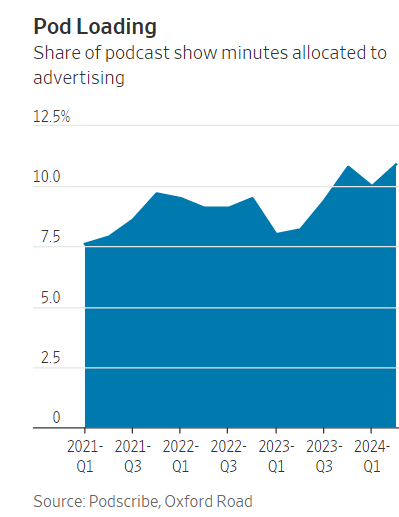
Via WSJ
Now let’s talk about all those commercials worming their way into our favorite podcasts. A new Wall Street Journal story – “Podcasts Used to Be Ad-Light Oases. Not Anymore.” – warns about “ad creep” making one’s favorite podcast less listenable.
It includes this chart that should stir up feelings of P.T.S.D. for radio programming veterans who had to stand by during the go-go ’90s and ‘oos as spot loads swelled.
And as we know, commercials continue to be a major impediment to radio listening today. Hopefully, those creative podcasters will get the message and get out in front of the problem before it’s too late.
Talk about annoying.
You can take Buzz Knight’s short research survey about his “Takin’ A Walk” podcast here.
Originally published by Jacobs Media



